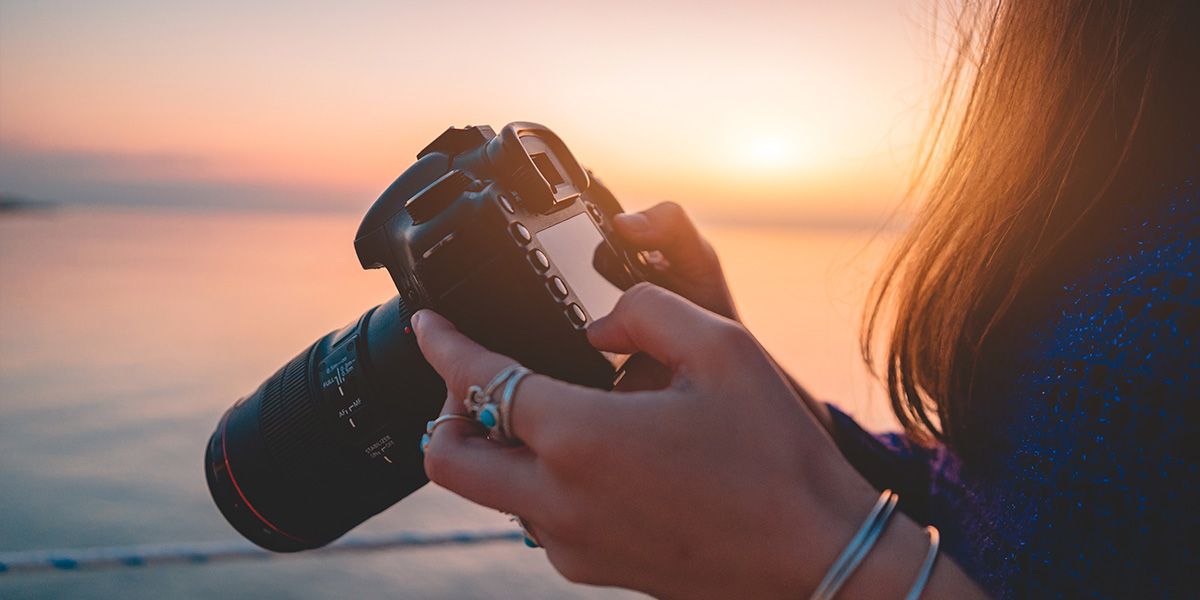
5 problems dealing with photos that make designers cringe
We live in a world where it is very easy to snap a photo and yet it is very hard to take a useful photo. As designers we will often find ourselves working with a large assortment of both stock and client photos. These photos can be the most amazing perfect photo you have ever seen and still be unusable when it comes to design.
If you want to improve your photos so they can be used by designers read on. If you’re a professional photographer, please at least read the fifth problem. I can almost guarantee you have this problem.
Each one of these points may cause a particular photo to be unusable, or if you insist on using it the designer cringes and you are not happy with the final outcome.
Pixilated or fuzzy photos
Photos are made up of pixels. Each pixel has a certain amount of information. If you quickly take a photo or use a low-quality camera your photo quality will be really low. In many of our designs we are looking for max quality images.
This means images need to be as clear and large as possible. If we have an image that is a tiny bit fuzzy and then have to manipulate that image, make it larger, crop it, etc, that fuzziness will only be enhanced.
Make sure your images are as clear as possible to get the best possible results by using a good camera, not rushing the shot and making sure your subject matter is focused.
Small photos
This point goes hand in hand with the previous one. Since each image has a set number of pixels as we make an image larger it doesn’t add more pixels, it simply stretches the pixels that are there.
So lets say we have a space that is 1000 pixels(px) wide. We have received a photo that is 250px wide. In order to fill the space we will have to make that image 4 times larger. This stretch will cause the image to become pixelated and fuzzy.
Photos are upside down
This point is more of an annoyance than anything. Many times, if you are taking photos on your phone, when sent, the images come across as upside down. If these are images that are ready to go into a design, we end up having to manipulate them. Make sure to double check the orientation of your images and also see which way is up on your phone. This varies based on so many factors we are not going to cover this. Simply Google your phone model looking for image capture orientation. That should give you some clues.
Photos not sent as attachments
We receive photos a million different ways. From being messaged to us in a text to a photo we must take out of a frame and scan. By far the most frustrating of all the images sent is the image send in a document.
When we receive a photo in an email as an attachment we can quickly save, manipulate and utilize that image.
Images sent within another document, such as Word Documents, mean that we have to save the image out of the document. This extra step can have problems with the quality of your image as well as taking a lot more time to deal with.
The same issue happens with some emails when the images are not attached, but rather inserted into the email body itself. By ensuring the images are actually attached, rather than inserted, you can ensure you are sending the best quality of photo over to your designer.
Subject matter is too tight
This is a problem that 99% of all stock photographers have and it makes most of their photos useless. Your subject matter is too tight.
I don’t know how many times we end up finding the perfect photo, but the photographer has taken a medium shot of the subject. The expression and quality of the photo is amazing; however, we need it to fill a horizontal banner…. So, we pass it by.
If you are creating stock photos for designers, you must give them room to breathe and be creative. Perhaps it is a conflict of artists where their photographer sees the final use of their photo rather than creating a blank canvas for the designers to take their creation to another level.
The way to fix this is to provide a version of your photo where there is lots of space around the subject. This allows for a variety of cropping and design options and will make designers crazy happy 😊.
Design is always changing, and we want our photos to be as dynamic as we are. The more versatile a photo is the more it can be used and the more your designer will love you.
Are you looking for design work? Contact us today to get started on your project.